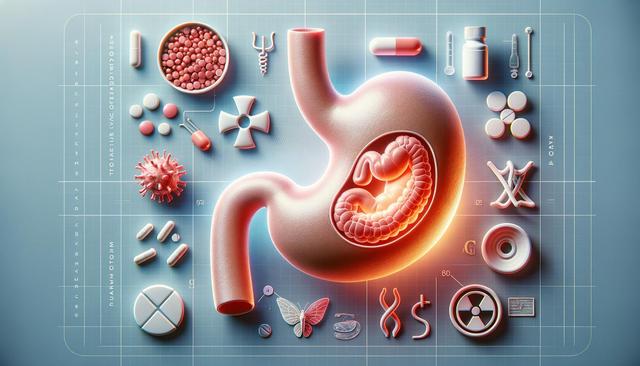Diagnosis and Early Steps
Treatment for gastric cancer begins with a solid diagnosis. The process usually involves a combination of physical exams, imaging tests like CT scans or endoscopy, and biopsy procedures. These steps help doctors determine the stage and location of the cancer, which directly influences the treatment approach. Early detection plays a significant role in improving outcomes, so any persistent symptoms such as indigestion, unexplained weight loss, or stomach pain should be examined promptly.
Once a diagnosis is confirmed, doctors work with patients to develop a personalized treatment plan. This plan often includes a multi-disciplinary team consisting of oncologists, dietitians, surgeons, and support staff. The goal is to address the cancer while also maintaining quality of life. Here are some common diagnostic tools used:
- Endoscopy with biopsy
- Computed tomography (CT) scans
- Staging laparoscopy
- Blood tests for tumor markers
Each test provides valuable information that allows healthcare providers to choose the most effective course of action for the patient.
Surgical Treatment Options
Surgery is often a primary treatment method for gastric cancer, especially if the cancer is detected early and has not spread extensively. The goal of surgery is to remove the tumor and a portion of the surrounding healthy tissue to prevent recurrence. The type of surgery depends on the tumor’s location and size.
Common surgical procedures include:
- Subtotal (partial) gastrectomy – removal of part of the stomach
- Total gastrectomy – complete removal of the stomach
- Lymph node dissection – removal of nearby lymph nodes for testing and prevention
Recovery from surgery varies among individuals but usually involves a hospital stay and a gradual return to normal eating habits. Nutrition support and regular follow-up care are critical during this time. While surgery can be curative for localized cancer, it may also be combined with other treatments like chemotherapy or radiation to enhance effectiveness.
Chemotherapy and Drug-Based Treatments
Chemotherapy is frequently used in both early and advanced stages of gastric cancer. It involves the use of drugs to destroy cancer cells or stop them from growing. Chemotherapy can be administered before surgery (neoadjuvant) to shrink tumors, or after surgery (adjuvant) to reduce the risk of recurrence. In advanced cases, it may be the main treatment option when surgery is not feasible.
Types of chemotherapy drugs used include:
- Fluorouracil (5-FU)
- Capecitabine
- Cisplatin
- Oxaliplatin
Patients may receive these drugs orally or intravenously, often in cycles with rest periods in between. Side effects can include nausea, fatigue, and lowered immunity, but supportive medications and nutrition plans can help manage these issues. In some cases, targeted drug therapies or immunotherapy may also be considered, especially if specific gene mutations are present in the cancer cells.
Radiation and Combined Therapies
Radiation therapy uses high-energy rays to target and destroy cancer cells. It is usually combined with chemotherapy as part of a treatment plan for more advanced gastric cancer. This combination, known as chemoradiation, can be particularly effective in shrinking tumors before surgery or managing symptoms in inoperable cases.
Radiation therapy may be used to:
- Shrink tumors before surgical removal
- Kill remaining cancer cells after surgery
- Relieve symptoms such as bleeding or pain in advanced stages
Side effects of radiation can include fatigue, skin irritation, and gastrointestinal discomfort. However, many patients find the benefits outweigh the temporary discomfort, especially when radiation helps make surgery more effective or delays disease progression. Technological advancements in radiation delivery have also improved precision, reducing damage to surrounding healthy tissues.
Supportive Care and Lifestyle Adjustments
Gastric cancer treatment goes beyond medical procedures. Supportive care and lifestyle changes play a crucial role in recovery and long-term health. Nutrition is particularly important, as many procedures and treatments affect the stomach’s ability to digest food efficiently. A registered dietitian can help develop a meal plan that meets nutritional needs and minimizes discomfort.
Key areas of supportive care include:
- Nutrition guidance and meal planning
- Pain management and symptom relief
- Mental health support
- Physical therapy and exercise programs
Emotional support is equally important. Patients may benefit from counseling, support groups, or mindfulness practices to manage stress and stay motivated. In addition, regular check-ups and monitoring help ensure that any changes are addressed quickly. Building a strong support network of healthcare professionals, family, and friends can make a significant difference in navigating the journey of treatment and recovery.
Conclusion: Building a Personalized Path Forward
Gastric cancer treatment involves a multi-step, collaborative approach tailored to each individual’s needs. While the journey may start with a diagnosis, the path forward includes surgical options, drug therapies, radiation, and strong supportive care. Each component plays a vital role in improving outcomes and maintaining quality of life. By working closely with a dedicated medical team and staying committed to a care plan, individuals can navigate gastric cancer more effectively and regain a sense of control and well-being over time.


